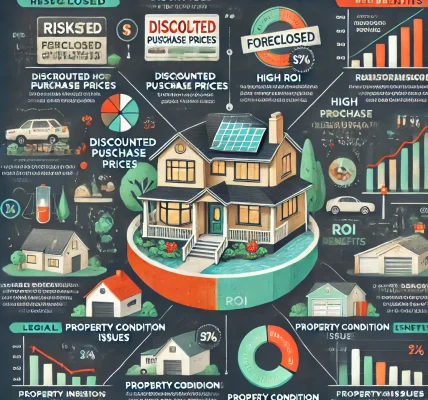Introduction
Investing in rental properties is one of the most lucrative ways to build wealth in real estate. However, choosing between short-term rentals (STRs) and long-term rentals (LTRs) can significantly impact your profitability, workload, and risk exposure. Each strategy has its pros and cons, and the right choice depends on your financial goals, risk tolerance, and market conditions.
In this guide, we will analyze the key differences between short-term and long-term rental strategies, compare their financial returns, and help you determine the best approach for your real estate investment.
1. Understanding Short-Term Rentals (STRs)
Short-term rentals, often listed on platforms like Airbnb and Vrbo, refer to properties rented out for a few days to several months. These properties cater to tourists, business travelers, and vacationers.
Key Features of STRs:
- Typically rented out for a few nights to a few weeks.
- High turnover of guests.
- Managed similarly to hotels.
- Requires furnishing, maintenance, and marketing.
- Subject to local regulations and restrictions.
Pros of Short-Term Rentals:
1. Higher Rental Income Potential
- STRs often generate more revenue per night compared to LTRs.
- Seasonal pricing allows owners to maximize profits during peak tourist seasons.
2. Flexibility
- Owners can use the property for personal stays when needed.
- Can adjust rental rates based on market demand.
3. Tax Advantages
- Many tax deductions are available, including property maintenance, utilities, and depreciation.
4. Diversification
- STRs allow investors to tap into the tourism market and take advantage of travel trends.
Cons of Short-Term Rentals:
1. High Operating Costs
- Requires frequent cleaning, maintenance, and restocking.
- Property management fees can be higher compared to LTRs.
2. Market Fluctuations
- Income is highly dependent on seasonality and economic conditions.
- Tourism downturns, pandemics, or travel restrictions can impact earnings.
3. Legal & Regulatory Challenges
- Many cities impose restrictions or bans on STRs.
- Some locations require special permits and licenses.
4. Higher Vacancy Rates
- Unlike LTRs, STRs experience fluctuating occupancy rates.
2. Understanding Long-Term Rentals (LTRs)
Long-term rentals are leased for extended periods, typically six months or more. These properties cater to families, students, and working professionals.
Key Features of LTRs:
- Leased for months or years.
- Stable tenant relationships.
- Less frequent property maintenance and turnover.
- Steady cash flow.
Pros of Long-Term Rentals:
1. Consistent and Predictable Income
- Monthly rent provides a stable, predictable cash flow.
- No seasonal fluctuations like STRs.
2. Lower Maintenance and Operating Costs
- Less frequent repairs and cleaning compared to STRs.
- Tenants are responsible for utility bills and general upkeep.
3. Easier Management
- Fewer tenant turnovers reduce administrative burden.
- Property managers charge lower fees than STR management companies.
4. Legal Protections
- Tenant laws often provide landlords with structured lease agreements.
Cons of Long-Term Rentals:
1. Lower Income Potential
- Rental rates are fixed for the lease duration.
- Less flexibility to adjust prices based on demand.
2. Tenant Risks
- Risk of problematic tenants causing property damage.
- Eviction processes can be time-consuming and costly.
3. Less Control Over Property
- Owners cannot use the property for personal stays.
- May have restrictions on property modifications during a lease.
3. Comparing Financial Returns: STRs vs. LTRs
Income Potential
- STRs can generate 2-3 times more revenue per month compared to LTRs in high-demand areas.
- LTRs provide steady, predictable cash flow with lower management costs.
Expenses
- STRs have higher costs due to frequent maintenance, cleaning, and marketing.
- LTRs have lower operational expenses since tenants cover utilities and minor repairs.
Occupancy Rate & Risk
- STRs are prone to seasonal demand, leading to fluctuating income.
- LTRs have higher occupancy rates with reliable long-term tenants.
Tax Implications
- STRs often qualify for business-related tax deductions.
- LTRs benefit from depreciation, mortgage interest deductions, and passive income advantages.
4. Factors to Consider When Choosing Between STRs and LTRs
1. Location
- STRs perform well in tourist destinations, urban centers, and business hubs.
- LTRs are better suited for suburban areas, college towns, and family-oriented neighborhoods.
2. Time Commitment
- STRs require active management, guest communication, and maintenance.
- LTRs are more passive, requiring less frequent involvement.
3. Local Regulations
- Check zoning laws and short-term rental restrictions in your area.
- Ensure compliance with tenant laws and landlord-tenant regulations for LTRs.
4. Financial Goals
- If maximizing income with higher risks suits you, STRs may be the right choice.
- If you prefer stability and lower management efforts, LTRs may be ideal.
Conclusion: Which Strategy is Right for You?
Both short-term and long-term rental strategies offer unique benefits and challenges. The right choice depends on your financial objectives, risk tolerance, and market conditions.
- Choose STRs if: You want higher income potential, flexibility, and are willing to manage an active business.
- Choose LTRs if: You prefer steady cash flow, lower operating costs, and minimal day-to-day management.




